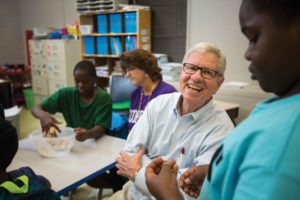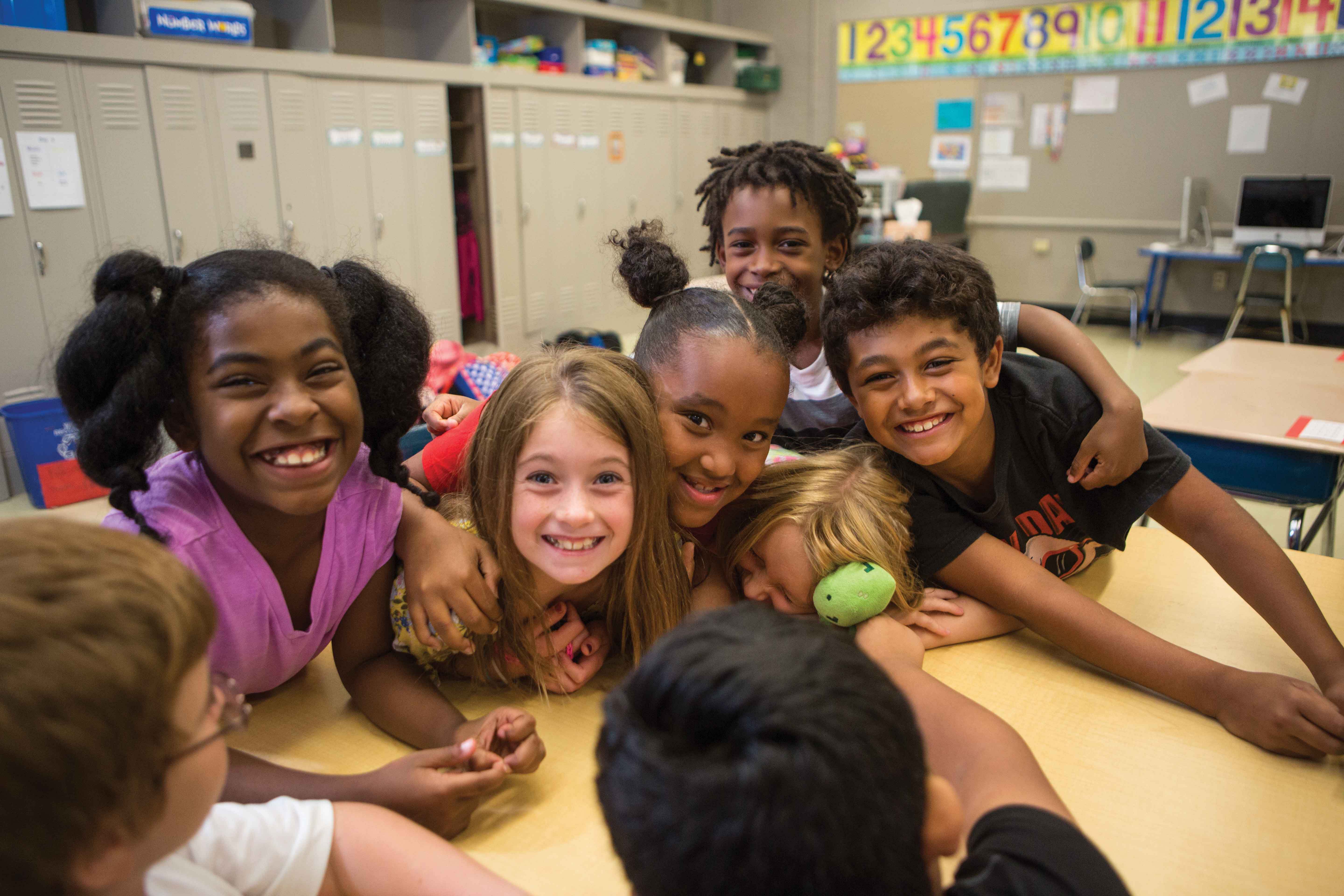By Whitney Heins
Most people would have assumed the boy, let’s call him Sam, was a lost cause. He was expelled from school no less than five times. He got into trouble. He got into fights.
Oftentimes, he was a no show at school for days.
But somehow, this once-troubled boy is graduating from high school in the spring with his sights set on UT’s culinary and cooking program next fall.
What changed Sam from potentially becoming a detriment to society to someone who will add value? The argument can be made it was the time he spent as part of UT’s University-Assisted Community Schools (UACS) project.
Sam is one of more than 1,200 Knox County Schools students who have been through the after-school program since 1998. The program is made up of UT students, faculty, and staff who lend their time and talents to provide area schoolchildren academic support services, physical education, music, and art lessons—to name a few—after regular school hours. It operates in a handful of schools each year and has been implemented in a total of seven schools since its inception.
 UACS is the brainchild of its director Bob Kronick, a professor of educational psychology and counseling in the College of Education, Health, and Human Sciences, who dreamed it up after working in juvenile corrections facilities and at Knoxville’s Lakeshore Mental Health Institute.
UACS is the brainchild of its director Bob Kronick, a professor of educational psychology and counseling in the College of Education, Health, and Human Sciences, who dreamed it up after working in juvenile corrections facilities and at Knoxville’s Lakeshore Mental Health Institute.
“It was clear to me that by the time we started working with these kids, it was too late,” says Kronick of his former endeavors. “I thought, the schools are free after 3 p.m. Parents are there. Kids are there. It’s a gold mine.”
From Science to Shakespeare
UACS started in Sarah Moore Green Magnet Academy with humble beginnings, considering how much the program has grown. It offered mostly what the volunteers and students knew—education and music. Today the amount and scale of offerings are almost unbelievable.
“You name it, we’re doing it,” says Kronick.
There’s Science Saturdays where the kids work with UT Haslam Scholars to perform experiments like building solar ovens. There are circus classes where kids learn how to work together to stand on parallel ladders and walk on stilts. There are community gardens which make it possible for kids to prepare and eat meals made with the organic fruits and vegetables they’ve grown.
There is mental and dental health care and trips to UT where kids get to talk with student-athletes and tour campus. There are computer programming classes where kids work with university students to write code and create video games. There are art exhibits, robotics classes, recitations of Henry V, and philosophical discussions about Dr. Seuss.
The Orange Thread
While the offerings vary, there is one common thread sewn throughout—UT.
“I cannot overstate the power of the university in making our program so special,” says Karen Holst, program coordinator. “If you are a kid and you’re getting the opportunities to connect with UT students and all the exciting things going on at the university, it’s jaw dropping. The experiences are opening doors for them.”
Kronick was on the cutting edge when he conjured up the idea for UACS. Others were starting something similar in places like Portland and Cincinnati. But what makes Knoxville’s community schools so unique is the university’s involvement.
And, that’s why people from places like Scotland and Alabama have traveled to Knoxville to learn about the program. In fact, Montgomery, Alabama, started its own version of UACS in two schools this past year.
The program has also garnered attention and support from investors, corporations, and charitable organizations for the help it gives and the differences it has made.
Making a Difference
And these differences are life changing for people like a refugee girl from Congo who came to Knox County Schools only speaking Swahili. UACS hired a teacher who spoke her language, bridging a vital communication gap between the school and family. Yet the kindergartner still came to school quiet and crying. Everyone assumed she was shy and feeling left out because she couldn’t speak English.
But everyone was wrong.
“Thanks to one of our teaching staff who had the foresight to ask this child to open her mouth, we discovered a serious dental issue,” says Holst. “Less than 12 hours later, I drove the parents and this child to the dentist. We discovered, after she healed, that she was anything but shy.”
In addition to providing health care, UACS is also instilling healthy habits.
“We’re seeing the power of combining our garden program with physical education. Our kids aren’t chubby. Our asthma and diabetes rates are coming down,” says Kronick, adding that UACS can also be credited with keeping kids out of jail, juvenile detention, and the unemployment line.
Keisha Knight has two children enrolled in UACS. She says its structure and support have pushed her kids to do the best they can with whatever obstacles they encounter.
“This program has helped build their character and self-esteem. That’s why it means a lot to me and my family.”
Ripple Effect
UACS also provides opportunities for parents to grow and enrich themselves. For example, Knight volunteered to run a basketball camp for kids last year.
The Congolese girl’s family received free lessons to learn English, how to write a resume, and how to fill out job applications. Several family members are now on their way to earning their GED.
New this year, UACS is offering pre-GED preparation classes—opening doors for parents while empowering them to help their kids with homework.
“We serve a lot of families teetering on poverty, who are working multiple jobs and going to school, as single parents,” says Holst. “They are struggling to put the pieces together, and it takes a program like ours, a support system to the whole family, to enable them to move on, get a better job, and advance their professional lives.”
Kronick says the program has kept many parents out of jail, and he and his team are always looking for new ways to expand to improve participants’ lives.
“It’s an art, not a science,” says Kronick. “We never know what will work and what won’t, but we always want to try.”
Indeed, Kronick had no idea if UACS would remain a far-fetched dream. He had no idea he would have waitlists, or people from around the world wanting to learn more.
He had no idea there would be countless students, like Sam, staying out of trouble and on track for a bright future.
Photos by Kellie Crye Ward


1 comment
I am so proud of my university and what they have done to make a difference in the community by using previously untapped resources. Will share with my University of Maryland colleagues. As a 41 year educator, I applaud your innovative problem solving! Bravo! UT Knoxville 1976.